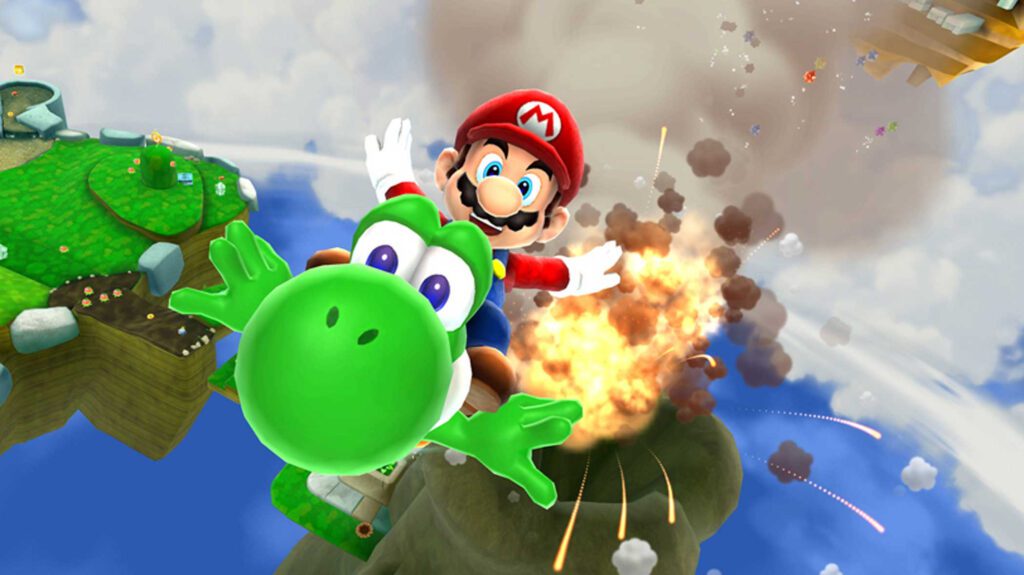Super Mario Galaxy 2, released in 2010 by Nintendo, revolutionized the 3D platformer genre. Its use of a non-linear gameplay experience through the Galaxy Map allowed players more control over the order they played levels, and the introduction of power-ups such as the Cloud Flower and Yoshi added a new layer of gameplay depth and variety. The game’s exceptional level design, imaginative world-building, and masterful musical score further enhanced the overall experience. Super Mario Galaxy 2 remains a classic that sets a new standard for game developers in the industry.
Super Mario Galaxy 2: A Revolution in 3D Platformers
Introduction
Super Mario Galaxy 2 is a game that has left a mark in the gaming industry. Released in 2010 by Nintendo, it built on its predecessor, Super Mario Galaxy, and introduced new features that helped to revolutionize the 3D platformer genre. The game was highly-acclaimed, receiving numerous awards and positive reviews from players and critics alike. In this article, we will explore the features that made Super Mario Galaxy 2 a revolution in 3D platformers.
Galaxy Map
Super Mario Galaxy 2 did not adopt the traditional linear level structure of previous Mario games. Instead, it introduced a non-linear gameplay experience through the use of the Galaxy Map. The Galaxy Map allowed players to freely navigate between different galaxies, each containing a set of planets or levels. This approach gave players more control over the order they played levels and a sense of exploration that was not present in previous Mario games.
Power-Ups
Super Mario Galaxy 2 introduced numerous power-ups that added to the gameplay experience. These power-ups included the Cloud Flower that enabled Mario to create temporary platforms in the air, the Rock Mushroom that allowed Mario to smash through obstacles, and the Drill Bit that enabled him to tunnel through planets. These power-ups were creatively designed and implemented, making gameplay both engaging and entertaining.
Yoshi
Super Mario Galaxy 2 introduced Yoshi to the 3D platformer genre. Yoshi was a highly-anticipated addition that was well-received by fans. Yoshi’s unique abilities included his tongue that allowed him to eat enemies and objects, his ability to flutter jump, and his transformation into various power-ups such as the Dash Pepper that enabled him to run at high speeds. The introduction of Yoshi added a new layer of gameplay depth and variety.
Level Design
The level design in Super Mario Galaxy 2 was exceptional. The game featured captivating visuals and imaginative worlds, such as the Cosmic Cove Galaxy, featuring a planet filled with water reminiscent of Super Mario Sunshine’s Isle Delfino. Each level had its unique set of challenges, puzzles, and obstacles that kept players engaged and motivated to progress. The levels were also designed with accessibility in mind, making them enjoyable for players of all skill levels.
Musical Score
The musical score in Super Mario Galaxy 2 was a masterpiece. Composed by Mahito Yokota and Koji Kondo, the game’s soundtrack features a blend of orchestral and electronic music that perfectly complemented the game’s space-themed setting. The music was pleasing to the ear and invoked a sense of adventure and excitement in players.
Conclusion
Super Mario Galaxy 2 revolutionized the 3D platformer genre through its innovative features such as the Galaxy Map, power-ups, and the introduction of Yoshi. The game set a new standard for level design, with captivating visuals and imaginative worlds. Its musical score was masterfully composed and enhanced the overall gameplay experience. Super Mario Galaxy 2 remains a classic that stands the test of time and remains an inspiration to new game developers in the industry.
